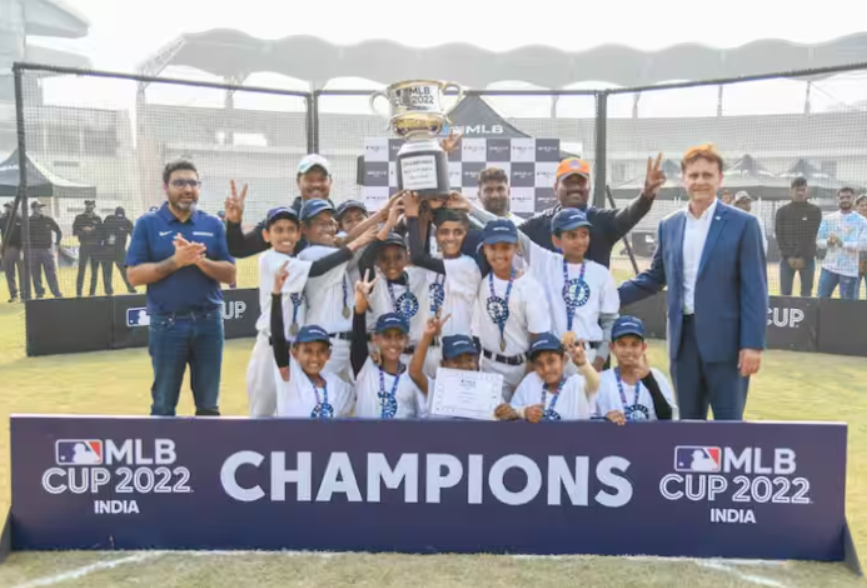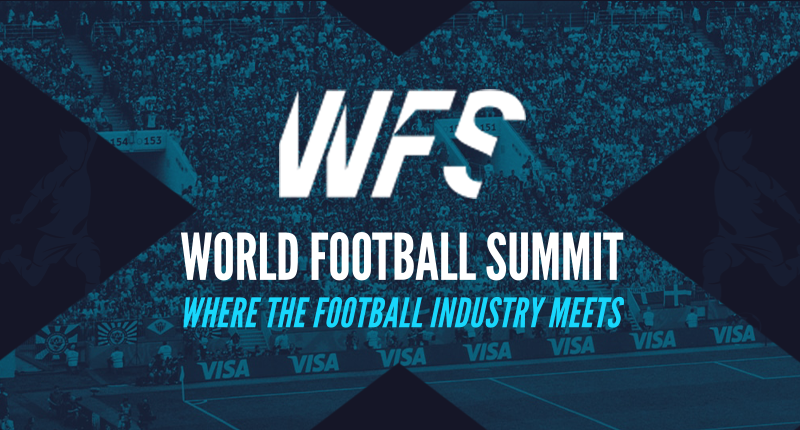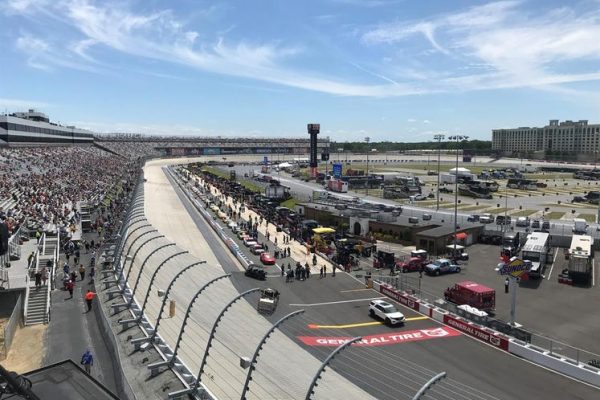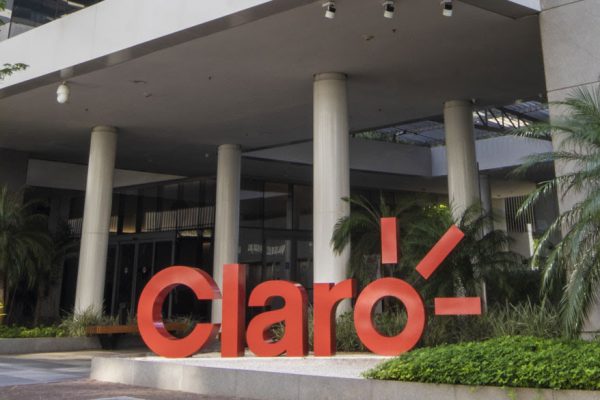The Major League Baseball (MLB) is working in India to develop and promote baseball in India through grassroots programming, personal connections, and a mindset shift. The Playknox founder Taruka Srivastav spoke with Ryo Takahashi, Senior Manager, MLB India about MLB’s efforts to build a strong foundation in India. He further emphasized the importance of patience and consistency in establishing India as a powerhouse in baseball.
You’ve been in India for some time now. So tell me, what’s your role?
We came here with a very long term plan to be able to build a foundation from the grassroots up. And then hopefully, in the next 10-20 years, we see the game progress in this market, becoming a normal sport, and then eventually becomes a powerhouse for baseball, where athletes start to compete internationally and we produce players at the higher level.
Tell us about the growing presence of MLB in India in terms of audience, in terms of viewership etc.
Oftentimes, when a league or brand comes in, the big focus becomes in today’s day and age is what is the social media following? what’s the audience? What if you’re on TV, what’s the viewership etc. We kind of have a different approach. MLB as a sport is very new sport to the market so our primary job right now is to really make baseball a normal sport in India, where it’s socially accepted.
We’ve been taking a lot of time doing our grassroots programming and it kind of lines up with our long term vision of building that foundation so that we create a generation of children who can say that they grew up consuming baseball in some way or another. It could be playing the game, it could be watching it on TV, following it on social media but let’s say five years back, before we had a presence, that number was very close to zero. But we know that in the four and a half years that we’ve been here, we’ve started to ingrain baseball into a large number of children who are going to grow up to be adults, to be decision makers, to be parents, and baseball becomes another option for them. I think there’s different ways to measure presence.
If you’re talking about what’s the brand awareness of Major League Baseball, that number may have not ticked as much as we’d like to but at the same time, that hasn’t necessarily been our focus in the early goings. In the future, we would love for MLB to be recognizable, widely and throughout India. Right now our focus is to really make sure that baseball becomes a staple in Indian sports. It’s definitely in the conversation of the sports world, in this market.
Is there a specific marketing and branding strategy?
Last year was the first time that we really kind of intentionally did a marketing opportunity by making an investment. Again, the basis of all of this is to be able to provide as many opportunities to play the game. So while we’re providing these opportunities to school children or to children outside of the big cities in the rural areas, MLB kind of comes attached with that sport. We wanted to create an environment where baseball equals Major League Baseball and that becomes a staple for the Indian children.
In terms of marketing, we’ve partnered with Star Sports and Fancode. They’ve been airing our postseason games, our regular season games. The only issue is that all of our games are played in, because of the time difference, past midnight for the most part.
So it is hard to bring or increase that number of audience or viewership in terms of watching the live games but we created a documentary last year that talks on baseball in India as a whole. It was highlighting an Indian-American young man named Arjun Nimala, who was drafted by the Toronto Blue Jays, one of our 30 clubs in the US, and actually Toronto Blue Jays, so they’re in Canada, drafted by them in the first round.
We kind of illustrated his journey, coming back to India, seeing the areas that his parents grew up, taking his Indians self peace of mind to the US and implemented into the baseball role that he’s going to be in for the next couple of years. Even in that initiative, you can see that we’re not trying to put the brand upfront, we’re trying to make the personal connection for the people that play the game to say, “Okay, if that kid or that person, that Indian person can play the game at the higher level, then I can definitely do that, too.” So creating that mind connection and as an end result, tying that into MLB is what we’ve been trying to do up until this point.

Have you ever thought of like a cross promotion like how the NBA is doing it – signing Indian cricketers as brand ambassadors to promote basketball in India.
Absolutely. The NBA, the NFL, the NHL and all the US major sports, and even Major League cricket, are trying to make a presence in India right now. We’re all we’re obviously not partners, but we all work together, we bounce off ideas, there are a lot of learnings that we have from their presence in India. They’ve been here for a longer period of time than we have. And hopefully, there’s something that we do that can be inspired by. We all see the opportunity in the digital world today, where you don’t necessarily have to sit in front of the TV live to be able to be a fan of a sport, especially the younger generation, would go through the stories on Instagram or go through the X feeds to figure out scores and what happened in the in the games. And I think there are different ways where we can engage fans. They can still be hard core fans, even if you don’t stay up until 3am to watch the full two and a half hour baseball game. We just need to be a little bit creative on finding ways to create that hook, allow these fans to consume the sport at a decent hour and then every once in a while when there’s a game that they really want to catch that hopefully they have the opportunity to stay up and catch the full game because ultimately, that’s the best experience that you can have.
Which are the states is actually you know, where the kids are actually playing pays for the there’s coaching available to them, which are these territories in our country?
We start with Delhi, Mumbai and Bangalore because that’s where we have our partner schools. We have about 30 in each of the three cities, and it’s a big mix of private schools, public schools and government schools. We obviously needed to kind of experiment and learn from what are the kinds of schools that are going to react positively to a new sport like baseball. There’s definitely benefits to a private school where maybe the parents are a little bit more connected to the outside world, but you go to a government school, they may not have the opportunity to play or have a proper Physical Education program. So within our program, we’re able to implement that. And so there’s different benefits that come out of our relationship with these different schools. So definitely in those three cities, you see a big presence.
MLB Cup is our youth tournament that we started in 2021, coming out of Covid. In the first year, we had 12 teams that we kind of had to beg the coaches to say, “Hey, look, we need you to put together a team for kids that are 9 to 11 years old” and it was just a walk in tournament. You didn’t have to play in to get there but we had 12 teams, we did the tournament, huge success. Last year, we had 113 teams compete, almost pan India, and this year we have over 200 teams registered. We got participants coming from Jammu Kashmir to down south in Kerala, Karnataka Pondicherry, but one of our biggest states of participation has been Maharashtra. Not so much Bombay Central, but more in the outskirts and then say down south is probably the next pocket in Hyderabad, Nizamabad and Kerala where we’ve seen a lot of baseball activity, a lot of good coaches that have taken their time to kind of develop the game. Over the course of the years, we’ve seen those numbers grow in those areas because there was a small pocket to begin with.
Has MLB signed any Indian sponsors yet?
Major League Baseball as a brand we like to bring value to our partners. We want the partnership to make sense in terms of the narrative. We’re still looking for that narrative of we’re going to grow from zero to, as far as we know, start in India and get global. I think that’s a narrative that we’ve been looking at But it’s not necessarily something that we’ve been focusing on Because in in the grassroots programming and the development, there is not much of the flash and dash. It’s not like we’re bringing in people and audiences to the grassroots programming. For us, it’s more important to build that relationship with the schools, with these parents with these children who are playing the sport and hopefully, as the years go by, and we have a greater presence, there’s some sort of value in some of the initiatives that we’re running is when we can find the right partner to be part of our narrative and our story of growth in India.
What’s your ultimate vision for baseball in India?
We initially looked at cricket and said that it has bat and ball and the catch and throw, there’s definitely a correlation with baseball. And every child at age one, two or three, is at some point gifted a bat and ball in their house, and they’re throwing the ball, hitting the ball. If you play it at a young age, and you continue to play and there are many opportunities to play it at different levels, then you are going to find talent, you are going to find children that excel in that world. And so that’s what we’re trying to establish right now. To be able to provide that opportunity for baseball to be accessible, to be consumable on TV and on digital media. If that continues consistently for the next 5 to 15 years, we’ll definitely see talent coming out of India. I think in the early goings in the next year or two, we want to continue to build on the foundation. We want to continue to build new audiences whether it’s the young generation, the young parents who are about to send their children to decide to go to swimming class or the dance class or to baseball class, and hopefully it becomes one of their options. I strongly do believe that India can be a powerhouse of baseball if we continue to be patient and do the right thing as we move forward.







